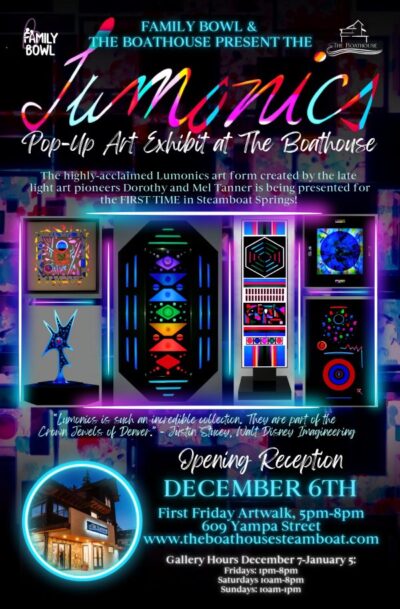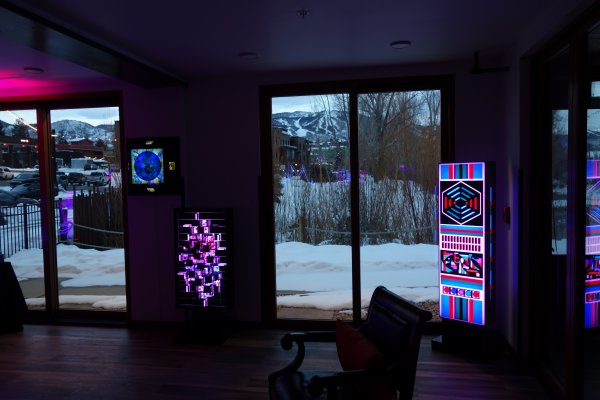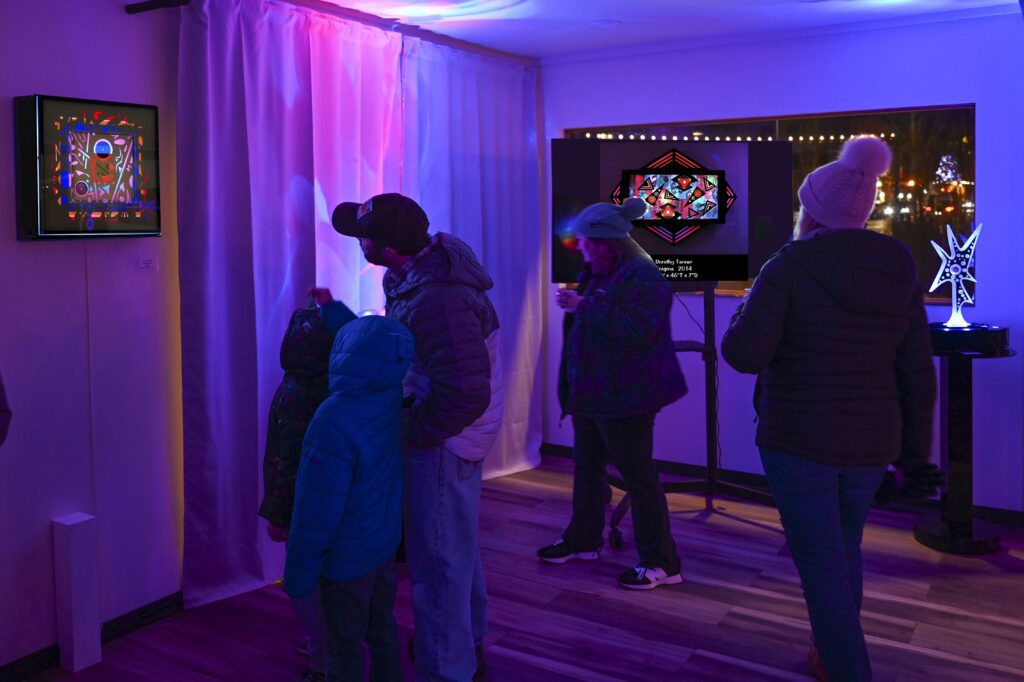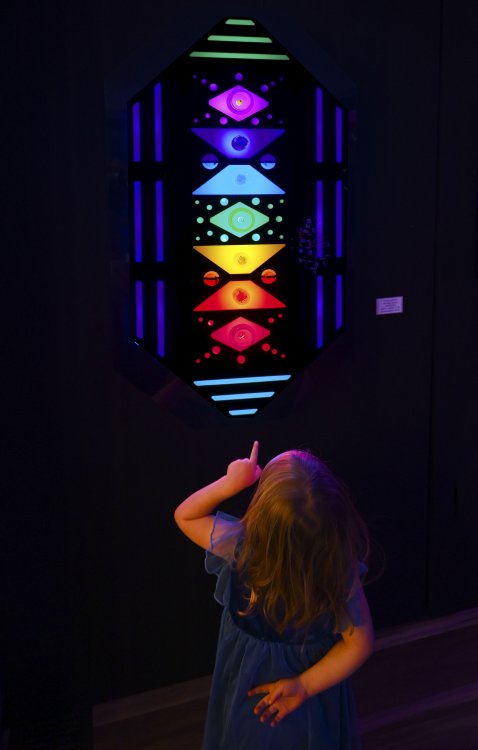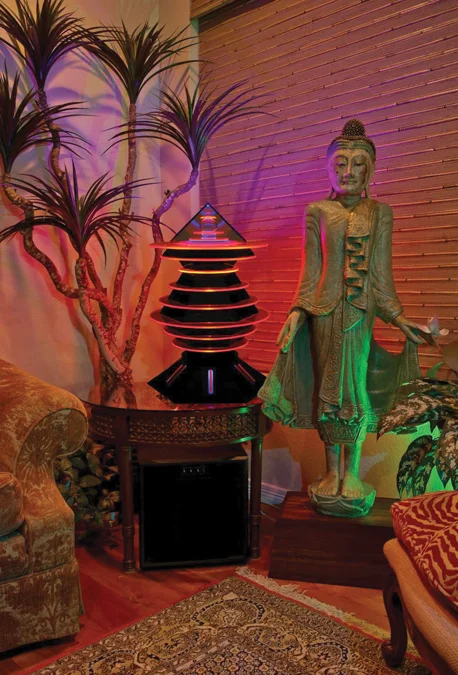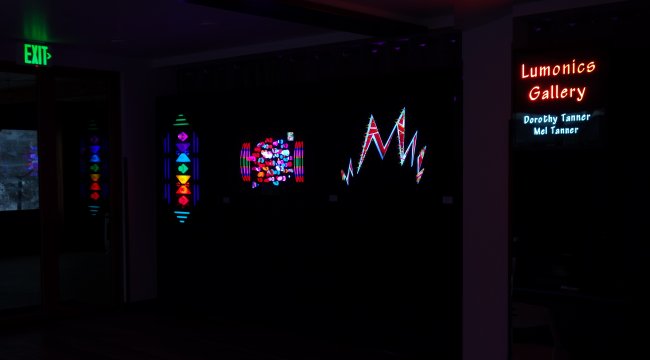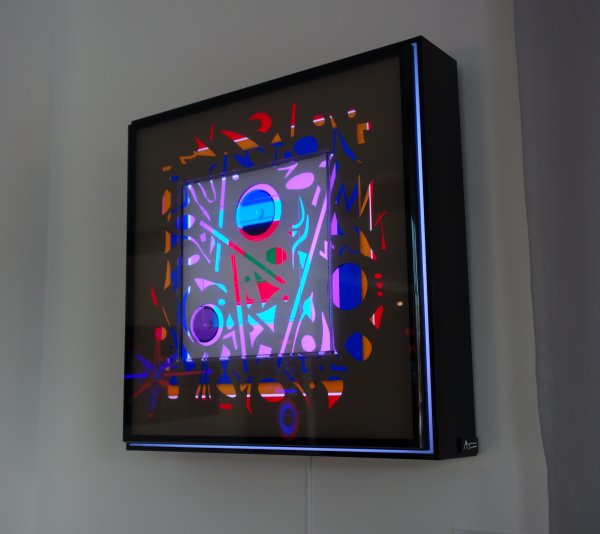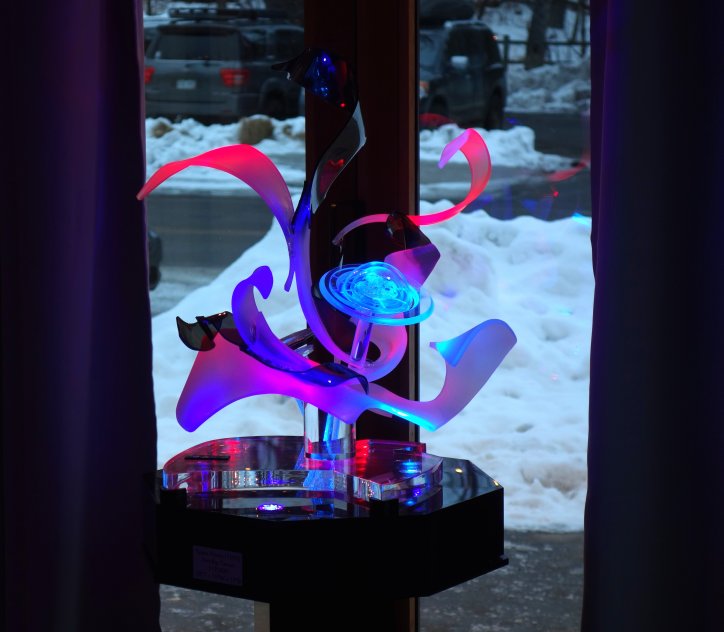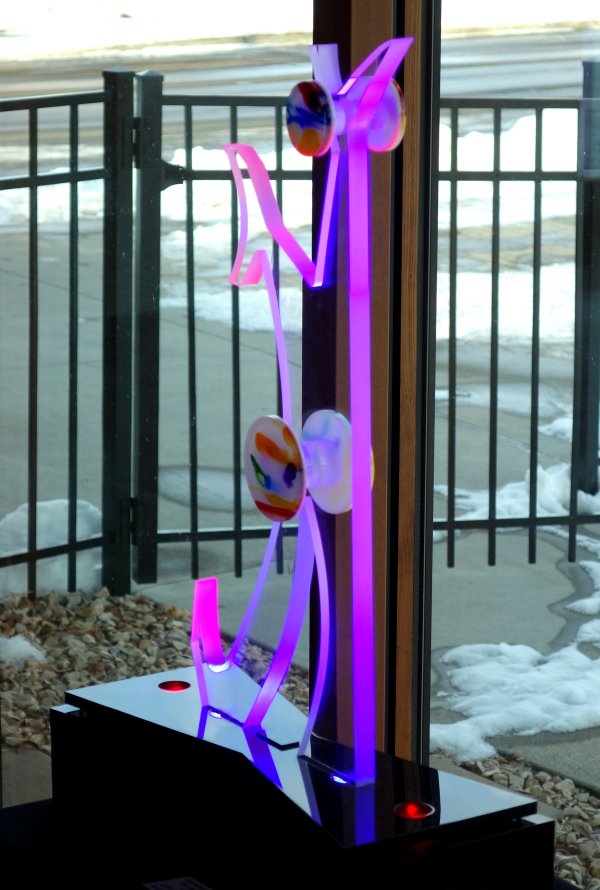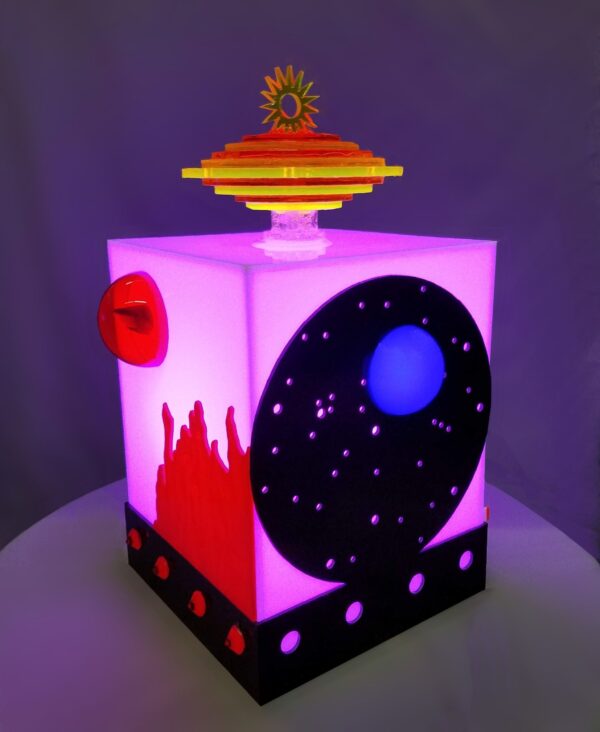
Just a reminder that you can still sign up for 1-day session at the Lumonics School of Light Art.
A 1-day class from 9am to 4pm with a 1/2 lunch break. We will provide you with a “ready-made” LED-lighted white cube with a remote control to alter the colors, and have all art materials available for you to use. You take home your new light sculpture at the end of the day. Each class is limited to two students
A minimum of 5 days notice is necessary so we can build your cube in advance. All materials are provided and you are welcome to bring in mementos or keepsakes. Professional assistance is available every step of the way.
Lumonics is one of the oldest and longest-running light art studios in the U.S. We hope taking the class sparks your creativity to continue in this field of art or something entirely different.
more info: https://www.lumonics.net/artclass
photo: Brad Gaerke’s cube

